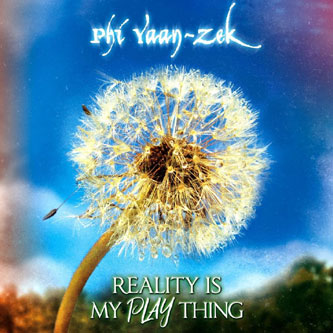 An
underrated and wonderfully unique guitarist and composer in the world
of 21st century fusion music, Phi Yaan-Zek continues to break
musical ground as an innovative progressive-rock protagonist. For
his long awaited 2018 comeback album—a two CD set called Reality
Is My Play Thing—Phi takes it all in and gets it all
together on a double disc that combines, progressive rock with jazzy,
avant gard instrumentals that set a new sonic standard in 21st century
music. With one half primarily rock-based vocal and instrumental,
called Play Thing, and a second CD of daredevil, white-hot,
guitar-keyboard centric fusion instrumental pyrotechnics called Strange
Thing, the release of Reality Is My Play Thing once again
unites Phi with his tried and trusted musical comrades—Marco
Minnemann (drums), Bryan Beller (bass), Mike Keneally
(vocals, keys, guitar), Lalle Larsson (keys) and Ola
Olsson (horns). Recorded in both the U.K. and in Southern California,
Phi’s double CD set combines a wealth of musical influences—as
mentioned in his press kit—including Frank Zappa, Steve Vai,
XTC, Steven Wilson, John Barry and even erstwhile prog-rock legends
Gentle Giant. Perhaps the beauty of Phi’s unique music is his
tightrope ride approach of blending accessible progressive music,
both vocal and instrumental, into his own self-actualized and deeply
complex musical output. Featuring 36 tracks spread over two CDs—not
forgetting a collectable triple disc set version featuring a bonus
disc, for the diehard fans—Reality Is My Play Thing is
a truly spectacular and intensive musical event that is never at a
loss for uncovering new and novel combinations of jazz-rock fusion
sounds. www.pyzmusic.com
An
underrated and wonderfully unique guitarist and composer in the world
of 21st century fusion music, Phi Yaan-Zek continues to break
musical ground as an innovative progressive-rock protagonist. For
his long awaited 2018 comeback album—a two CD set called Reality
Is My Play Thing—Phi takes it all in and gets it all
together on a double disc that combines, progressive rock with jazzy,
avant gard instrumentals that set a new sonic standard in 21st century
music. With one half primarily rock-based vocal and instrumental,
called Play Thing, and a second CD of daredevil, white-hot,
guitar-keyboard centric fusion instrumental pyrotechnics called Strange
Thing, the release of Reality Is My Play Thing once again
unites Phi with his tried and trusted musical comrades—Marco
Minnemann (drums), Bryan Beller (bass), Mike Keneally
(vocals, keys, guitar), Lalle Larsson (keys) and Ola
Olsson (horns). Recorded in both the U.K. and in Southern California,
Phi’s double CD set combines a wealth of musical influences—as
mentioned in his press kit—including Frank Zappa, Steve Vai,
XTC, Steven Wilson, John Barry and even erstwhile prog-rock legends
Gentle Giant. Perhaps the beauty of Phi’s unique music is his
tightrope ride approach of blending accessible progressive music,
both vocal and instrumental, into his own self-actualized and deeply
complex musical output. Featuring 36 tracks spread over two CDs—not
forgetting a collectable triple disc set version featuring a bonus
disc, for the diehard fans—Reality Is My Play Thing is
a truly spectacular and intensive musical event that is never at a
loss for uncovering new and novel combinations of jazz-rock fusion
sounds. www.pyzmusic.com
mwe3.com presents an interview with
Phi Yaan-Zek
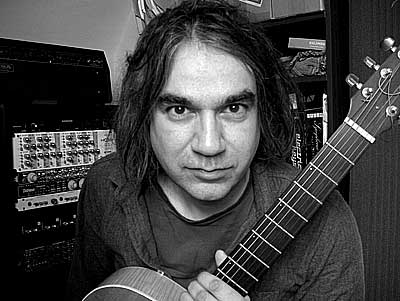 Introduction
and interview written and conducted by Alan Benjamin for mwe3.com
Introduction
and interview written and conducted by Alan Benjamin for mwe3.com
I was first turned on to Phi Yaan-Zek’s music via virtuoso
keyboardist Lalle Larsson, whom I’d had the pleasure of working
with, a couple of times, in the latter part of the previous decade
in the context of the New Jersey Proghouse live concert series. Having
been quite intrigued by the samples of Phi’s music I’d heard,
it was very rewarding to have procured a couple of his early CDs shortly
afterward—there was something quite mesmerizing and charismatic
about these albums and I looked very forward to hearing more when
the opportunity arose.
After inadvertently losing track of Phi’s activities for a while,
a close friend from Milan alerted me to the upcoming release of Reality
Is My Play Thing
back in early June and shared the corresponding Bandcamp link. At
that point, Phi had only posted the tunes from the first CD’s
worth of material - the more vocal/accessible-oriented “Play
Thing” disc - but it was all so compelling that I decided to
pre-order the “Special Edition Triple CD Set” and patiently
awaited the album’s official release to hear the rest. When the
release finally came, I’d found that the “Play Thing”
tunes I’d heard only once ahead of time were already growing
on me significantly and I was also quite taken with the remainder
of the material that had not been accessible for preview in advance.
When offered the opportunity to interview Phi for MWE3.com, I was
quick to jump on board. Between the massive scope and versatility
of the project, along with participation of several other favorite
musicians, my interest in learning more about the album made it a
pleasure to conduct the following interview—and I hope you enjoy
the results as much I did.
mwe3: On my first listen to Reality Is My Play Thing,
I was immediately hooked by the creativity, diversity of styles, and
how all the virtuoso musicianship seems to always serve the music,
as opposed to the other way around. By the time the nearly 130-minute,
two-part, double CD ended, the incredibly ambitious scope of the project
was particularly striking. Would you please share an overview of the
album’s origins, creation, and completion?
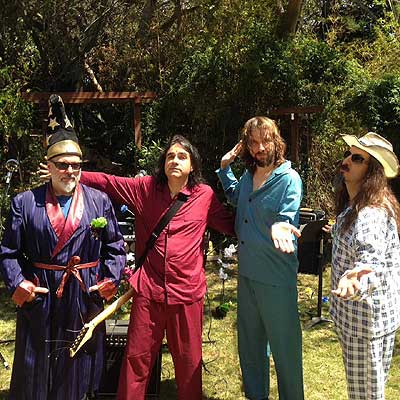 Phi
Yaan-Zek: Yes it was 2006 and I was thinking about what the follow
up to my 2005 guitar instrumental release Solar Flare would
be. I had another guitar-instrumental album written and in preproduction,
but I felt the deep need to stretch myself, both artistically and
musically, and not start repeating myself or laying back on my laurels.
There were some vocal songs that I had been writing and I decided
to flesh them out, as well as develop some lyrical themes I had on
my mind. I just had to follow my inner urgings to take this new direction,
and so I put that guitar-instrumental album on hold and started Reality
Is My Play Thing, initially as a single vocal-orientated album.
The only two instrumentals I had at the beginning were “The Magnetic
Victory” and “Dragonfly Medicine, as well as a bunch of
little interlude ideas. The rest were my new songs.
Phi
Yaan-Zek: Yes it was 2006 and I was thinking about what the follow
up to my 2005 guitar instrumental release Solar Flare would
be. I had another guitar-instrumental album written and in preproduction,
but I felt the deep need to stretch myself, both artistically and
musically, and not start repeating myself or laying back on my laurels.
There were some vocal songs that I had been writing and I decided
to flesh them out, as well as develop some lyrical themes I had on
my mind. I just had to follow my inner urgings to take this new direction,
and so I put that guitar-instrumental album on hold and started Reality
Is My Play Thing, initially as a single vocal-orientated album.
The only two instrumentals I had at the beginning were “The Magnetic
Victory” and “Dragonfly Medicine, as well as a bunch of
little interlude ideas. The rest were my new songs.
The instrumental second disc developed through the California recording
sessions, such as “The Jumbleberry Fiddlestick Folly”, which
was originally a little interlude idea, but through jamming on it
in the studio grew into a much longer piece. Other tracks like “Subterranean
Empires” came about from ideas from Marco Minnemann’s Normalizer
2 project for which I recorded two albums. That track, like the
Normalizer 2 material, had its basis as an improvised drum
solo combined with some orchestrated ideas that I used as a platform
to compose upon. By the time the second California recording session
came about, I had written more instrumental pieces specifically for
the core band of Bryan Beller and Marco, like “Bold Apparition”
and “Solar Heart Connect”.
The idea then was to have two connected-but-separate releases, Reality
Is My Play Thing and Reality Is My Strange Thing, but my
good friend, drummer Andy Edwards, said it would be much more prog
to release such an epic as a double album, which I did. In fact it
is a triple album as there was such a wealth of material that it spilled
over into the bonus disc Play My Strange Thing.
mwe3: May I please ask how you enlisted this amazing cast of
musicians to join you for the album, as well as the circumstances
behind the recordings that took place in California in the latter
part of the previous decade?
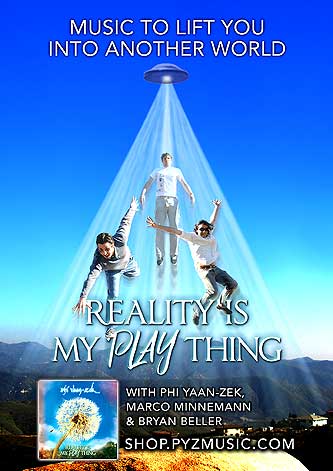 Phi
Yaan-Zek: The main lineup came about through Marco moving to San
Diego. I’ve known Marco since 2002 and we recorded the drums
for Solar Flare in Germany in spring 2003, so Marco was all
keen and excited to record my next follow-up album. This was originally
going to be in London, but then Marco moved to Southern California,
which was amazing for me as he then hooked up with Bryan Beller and
Mike Keneally. Now I’ve been a massive Mike Keneally fan since
I heard Boil That Dust Speck in the mid-’90s, and Mike
has been a massive inspiration for me on so many levels. So it was
via Marco that I connected with Mike and Bryan, which was perfect
as I had been playing Keneally’s Dog album to death at
the time and thinking that I wanted those kind of bass sounds for
my next album. And, hey presto, Bryan already knew about me having
previously bought Solar Flare and he loved the album, so that
when we finally connected he was very enthusiastic to be a part of
this project. Lalle Larsson I’ve known since we were both in
music school in Vienna in the early ’90s, and we’ve been
close friends ever since. Lalle’s musical genius had graced many
of my albums over the years.
Phi
Yaan-Zek: The main lineup came about through Marco moving to San
Diego. I’ve known Marco since 2002 and we recorded the drums
for Solar Flare in Germany in spring 2003, so Marco was all
keen and excited to record my next follow-up album. This was originally
going to be in London, but then Marco moved to Southern California,
which was amazing for me as he then hooked up with Bryan Beller and
Mike Keneally. Now I’ve been a massive Mike Keneally fan since
I heard Boil That Dust Speck in the mid-’90s, and Mike
has been a massive inspiration for me on so many levels. So it was
via Marco that I connected with Mike and Bryan, which was perfect
as I had been playing Keneally’s Dog album to death at
the time and thinking that I wanted those kind of bass sounds for
my next album. And, hey presto, Bryan already knew about me having
previously bought Solar Flare and he loved the album, so that
when we finally connected he was very enthusiastic to be a part of
this project. Lalle Larsson I’ve known since we were both in
music school in Vienna in the early ’90s, and we’ve been
close friends ever since. Lalle’s musical genius had graced many
of my albums over the years.
mwe3: How do you approach writing and arranging your music?
Additionally, to what extent did you conceptualize Reality Is My
Play Thing prior to the beginning of its recording and what kind
of work was done after the bulk of tracking was complete to bring
the album to fruition?
Phi Yaan-Zek: I never stick to one approach for writing music;
I use many different methods, techniques, and idea-generating processes.
This might include using improvisation and then composing over improvised
sections, as well as composing on different instruments. I like to
compose on a MIDI piano a lot, because my piano playing is so rudimentary
that it forces me to use my ear rather than rely on familiar scale
or harmonic patterns. Also, the use of different MIDI sounds can spark
new ideas. Then I may switch back to guitar for more riff-orientated
songs. Sometimes I write lyrics first and then put music to it, other
times musical ideas come to me in dreams. Usually, though, it’s
a combination of all of the above.
I had the title Reality Is My Play Thing from the beginning,
but didn’t consciously have a concept associated with it. However
I did find that one was emerging as I was putting the album together.
It is funny how music can be a great teacher and reflect back to you
previously unconscious thought processes and feelings. I came to see
there was an overarching semi-autobiographical theme in the album
dealing with the loss of play, spontaneity, and imagination that we
all originally had in abundance as kids but that gets wiped from us
as we grow up through (mainly) bad educational systems. Songs like
“Abigail’s Place” and the title track deal with that
wonder, magic, and imagination, while “Kindling”, “The
Killer Of The Spontaneous”, and “Break The Ice” deal
with its loss—while “Down From The Mountain” and “Alive”,
among others, are about bringing that back into one’s life again.
On a technical level, once the recording was complete, there was a
hell of a lot of intense mixing work done to make the album sound
the way I wanted—especially since there are at times such a huge
variety of complex sounds going on when the instrumentation gets really
dense. Making room in the mix for so many layers while keeping all
the intricate musical details audible was a real challenge.
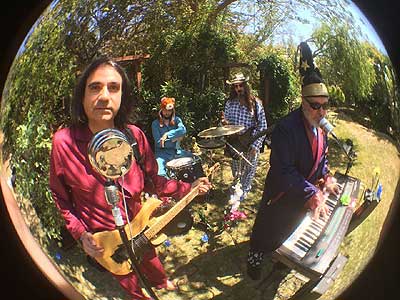 mwe3:
Would you please share what you consider to be the most interesting
aspects of the musical gear, recording techniques, and/or other logistical
elements leveraged in the process of making the album?
mwe3:
Would you please share what you consider to be the most interesting
aspects of the musical gear, recording techniques, and/or other logistical
elements leveraged in the process of making the album?
Phi Yaan-Zek: What is pretty interesting for me is that over
the 10 or so years of making this album, my main method of recording
electric guitar has changed. On the album in particular, half the
lead guitar sounds were recorded with a mic-ed up amp and then the
other half were recorded DI using virtual guitar plugins. It’s
only in the last couple of years that I feel that plugins have gotten
to the right level of quality for me to be usable—especially
with my lead tone, for which I can be really fussy. I think the testimony
to this is that from the feedback I’ve got back so far, no one
can tell which solos are done using an amp and which were done with
a plugin. In terms of virtual instruments while I did use some towards
the end to add extra layers, there’s still a magic and personal
vibe still inherent in using the real thing such as the Wurlitzer
electric piano and Hammond organ that was tracked at Urchin Studios
in London. Also, tracking the core rhythm section of guitar, bass,
and drums live in one take and without a click, for as many of the
tracks as possible, I feel was crucial in delivering the organic old-school
vibe I wanted this album to have. When you have musicians this good
at your disposal you just want to give them every chance to fly and
not be caged in with click tracks and recording things a bar at a
time. This album is about great performances, which I feel comes across
in the way it was recorded.
mwe3: Would you please share a bit more detail about the primary
guitars and guitar-oriented plug-ins you used for the recording?
Phi Yaan-Zek: Regarding primary guitars, most of the rhythm
guitar parts were tracked with my Fender American Ash Deluxe Strat
using a Rivera Hundred Duo Twelve combo for the US recording and a
Fender Princeton amp in the UK. Heavier rhythm guitar parts were mostly
done using my Mesa Boogie 100W Nomad Head or Mesa Boogie DC3 via SPL
Transducer cabinet simulator in the UK. All the rhythm guitar parts
were also recorded DI and so some of the sounds were then re-amped
in the mixing stage using my Mesa Boogie amps—as well as plugins,
in particular all the Brainworx series of guitar plugins that model
Mesa Boogie Rectifier, Fender Bassman, Marshall, Roland, Chandler
and Engl amps. This gave me the options to blend different rhythm
guitar tones to get the best vibe for a particular song.
The lead guitar parts were played on various custom Ibanez RG550s—late
’80s or early ’90s models— initially through my Mesa
DC3 combo via the Transducer. Then about half-way through tracking
the lead parts, for ease of set-up and consistency of sound, I switched
to recording DI and using virtual amp plugins. Over the years I have
demoed so many different makes of software trying to capture my particular
lead guitar voice, and for the most part I’ve been very disappointed
in getting the tone I wanted. However a few years ago I came across
Scuffham Amps S-Gear guitar plugin and I could finally get my lead
tone with some additional tweaking via a Massenberg EQ. The results,
I think, are quite compelling in that it is very difficult to tell
which lead parts were done with a real amp and which with S-Gear—I
even forget which is which sometimes! In terms of acoustic guitars,
I used Fylde Falstaff and Seagull Duet steel-string acoustics and
a K. Yairi nylon string classical cutaway, all mic-ed up with a Gefell
m295.
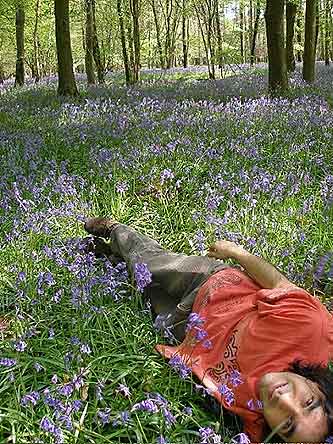 mwe3:
Am I correct in the impression that “The Magnetic Victory”
is, at least in part, a nod to the wonderful band, Cardiacs? In any
case, I’d love to hear a bit more about your view of the tune.
mwe3:
Am I correct in the impression that “The Magnetic Victory”
is, at least in part, a nod to the wonderful band, Cardiacs? In any
case, I’d love to hear a bit more about your view of the tune.
Phi Yaan-Zek: Actually, I’d never heard of Cardiacs till
about four years ago, and so there wasn’t any inspiration from
that quarter. However I do get the comparison, as it was when I played
Andy Edwards an early mix of “Alive” that he told me it
reminded him of Cardiacs. At the time I naively thought that no one
had done this kind of aggressive punky hard-rock meets jazzy-prog
thing before, but Andy said no, that’s very like Cardiacs, so
of course I went to check them out straight away and totally fell
in love with that whole pioneering musical world. I really wish I’d
heard them in the 80s growing up—they certainly would have been
my favorite band at the time. How come nobody told me about them before?
In fact I was living in Kingston-Upon-Thames at the time when I discovered
them, and that’s where the band were originally from.
“The Magnetic Victory” was one of those pieces written on
a MIDI keyboard, where I have a musical blitz and generate a huge
pool of as many exciting musical ideas as possible. I then construct
a musical piece by arranging, developing, and combining these ideas
together, like putting together a jigsaw. It’s a method I’ve
used a number of times before, with “Reunion” back in 1995
on the album Anomalies being the first time I tried that.
mwe3: I get the impression that you’re leveraging Bandcamp
as the primary resource for selling your music and applaud your making
the digital download for Reality Is My Play Thing available
in hi-resolution (2496) format there. (Note that purchasing the
CD on Bandcamp also entitles one to the accompanying hi-res downloads,
which are better than CD quality.) What are your thoughts about
Bandcamp as a platform and also ensuring your music is available to
listeners with optimal audio fidelity?
Phi Yaan-Zek: Bandcamp is a wonderful platform for both recording
artists and listeners. I do value having the option to download any
file format from MP3 and lossless to hi-res WAVs, together with a
merch section that allows for CDs, vinyl, T-shirts, and concert tickets.
Very well thought-out, and perfect for my needs, so I moved my entire
online shop over to Bandcamp for the release of the new album. I also
like the fact that the hi-res download option is included in the same
price for all digital download purchases. It does become ridiculous
when major labels are charging exorbitant prices for high-res versions
of their back catalogues—I mean it’s digital not something
that’s been specifically manufactured. It was important for me
to offer the 96k/24-bit versions of the new album to everyone who
wants it at a sensible price, rather than something three times the
price elsewhere.
mwe3: In addition to releasing your own albums and recording
with other artists, what other activities consume the musical side
of your life? What plans do you have for performing any, or all of
this music live?
Phi Yaan-Zek: I also do production, mixing, and session guitar
work from time to time. I have a few sessions I’m doing over
the summer—which is especially great when I’m given creative
freedom to be me, which is obviously what I’m really good at!
There is an album-launch show on September 15th, in the UK, where
we will be playing a lot of the material from the new album together
with a selection of tracks from my back catalogue, so I’m working
hard on getting that ready. Lalle Larsson is coming over from Sweden
for that, joining Ola Olsson (who played trumpet on the album) and
Mirron Webb from the band Hey Jester (who sang backing vocals on a
couple of songs will also be playing guitar and singing). For the
rhythm section I have bass virtuoso Steve Lawson and former IQ/Frost*/Robert
Plant drummer Andy Edwards. Tickets can be bought on Bandcamp here:
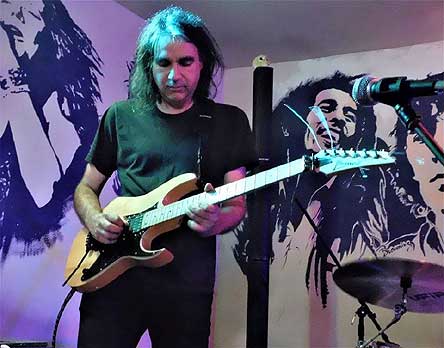 mwe3:
Who were the most influential artists, musicians and/or composers
in your formative years? Also, are there new musical acts that particularly
excite you?
mwe3:
Who were the most influential artists, musicians and/or composers
in your formative years? Also, are there new musical acts that particularly
excite you?
Phi Yaan-Zek: Growing up I think Steve Vai’s Flex-Able
album is the main culprit for inspiring many of my musical explorations!
Mike Keneally is also another big inspiration—he is such a musical
giant on many levels. Before I was even playing guitar in my very
early years, I was very much into film soundtracks, especially John
Barry’s Bond films and The Black Hole. Stravinsky, Mussorgsky,
and Debussy are the classical composers that have had the greatest
impact on me, and I would also add Zappa to that list. As a teenager
I was pretty much a metalhead, as I guess that was where the really
exciting guitar playing was at the time, but then that developed into
fusion via Mahavishnu Orchestra and Allan Holdsworth. These days I
mainly like listening to independent artists and Bandcamp is a truly
wonderful resource for that. Current favorites include the latest
albums by Regal Worm, Charlie Cawood, Steve Lawson, Free Salamander
Exibit. and A.M Ferrari Fradejas.
mwe3: I know that you studied at the American Institute of
Music in Vienna in the early 1990s and would be curious to know more
about your musical education in general. Also, would you be willing
to share some insights regarding your work as a music teacher and
lecturer?
Phi Yaan-Zek: The American Institute Of Music was like my own
personal shred guitar academy. It gave me the insights, discipline
and skills to build up my guitar playing to a high level – a
very inspiring and formative time. I always like to emphasize creativity
in my teaching work at Kidderminster College where we encourage and
give space to the students to develop their own unique creative voices.
A lot of music education in the UK is very sterile and only seems
to be geared to churning out tribute act musicians, rather than the
next generation of vibrant and visionary musical Jedis. What we offer
with the teaching at Kidderminster College is quite unique in that
respect.
 mwe3:
What’s next for you, both in the short and longer terms?
mwe3:
What’s next for you, both in the short and longer terms?
Phi Yaan-Zek: Short term, there are gigs planned in the UK
for Reality Is My Play Thing starting with the launch show
on September 15th. There’s also another album that I was recording
alongside ‘Reality Is My Play Thing’ in the UK that I hope
will be out next year. I’m also hoping to remix and remaster
more of my back catalogue for release on Bandcamp with an expanded
version of ‘Holotropic Guitar’ coming out next which features
some of my earliest recordings from the 90s. Then there are 2 more
live albums by Ley Lines (with Andy Edwards and Steve Lawson) that
need to be mixed and mastered. Not forgetting the 4th album that was
tracked in Southern California with Marco and Bryan – yes there
is a guitar instrumental album also recorded at that same time. I
never have trouble writing music, there are at least another 2 albums
that I’ve written material for, including an acoustic one. But
finding the time to produce them is another matter. Life is very busy!
Thanks to Phi Yaan-Zek @ www.pyzmusic.com
and to musicologist/journalist Alan Benjamin of the progressive rock
band ADVENT Check out the Advent web page at: www.AdventMusic.net



